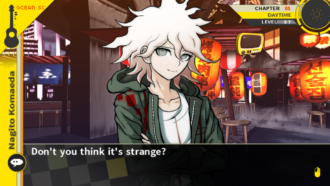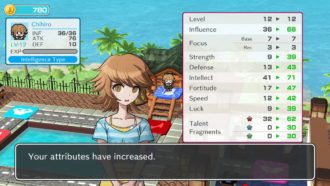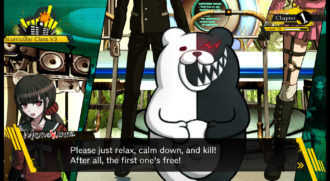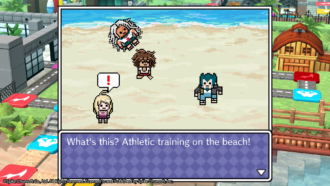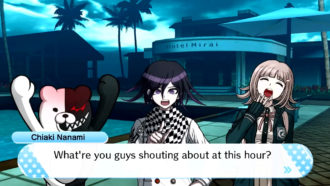Platform:
Nintendo Switch
Released:
December 3, 2021
Publishers:
Spike Chunsoft, Numskull Games
Developer:
Spike Chunsoft
It’s surprising that Danganronpa has only just made its way to the Nintendo Switch for the first time. Considering that all of the games were originally released on the PlayStation Vita, a modern handheld console like the Switch feels like a perfect fit. The Decadence collection brings the three mainline Danganronpa games (excluding the very entertaining side story Ultra Despair Girls, unfortunately) and a new board-based game called Danganronpa S: Ultimate Summer Camp together in one handy package.
The premise for the three mainline games is always the same: a class of eclectic high schoolers get trapped together and are forced to commit murder and get away with it if they want to escape, but in escaping, they also leave the rest of their classmates to die. Each student also has an Ultimate ability (or super-high school-level if you’re playing in Japanese) that very much influences their character and their skills in interesting and unique ways.
The game plays in a way that is most comparable to Ace Attorney, with investigation and then trial periods where the player character works to solve a murder. One of the big differences, of course, is that the person murdered is someone that you have grown to know (and likely even care for) throughout the game, and the person who killed them is going to be someone known as well. It gives the scenarios an extra punch as you feel a personal connection to both the victim and the culprit. Between murders and trials, you also have time to explore and talk to your other classmates, getting to know each other and trying to work out who exactly is masterminding the killing game as a whole. The overarching plot does a great job of keeping the player involved, while all the individual trials are interesting. Wanting to get to the meat of what is really going on is an amazing incentive as a player.
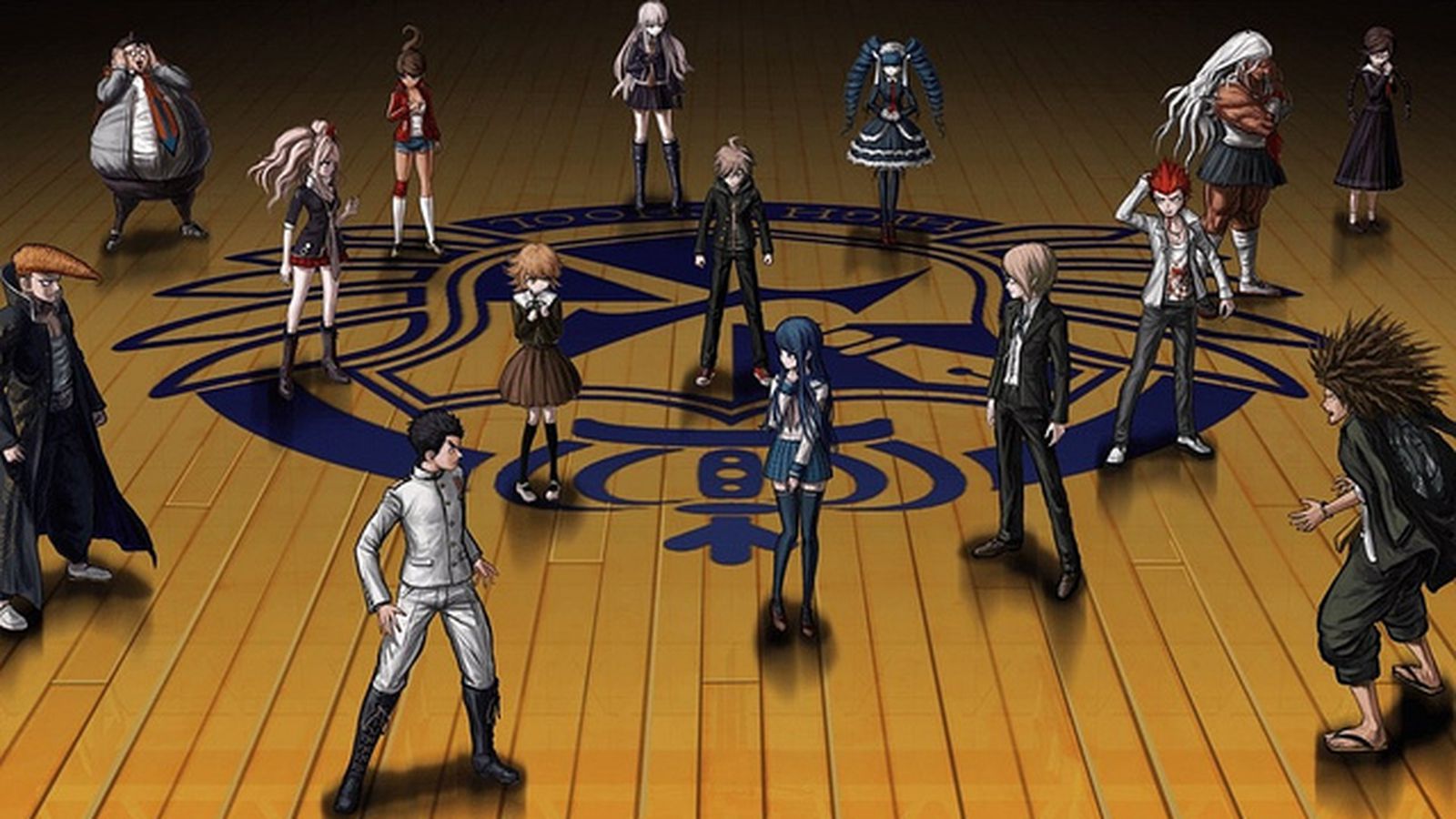
Danganronpa: Trigger Happy Havoc (DTHH) is where the series started, releasing in 2010 as a Japan-only title until it was localized in 2014. The game follows protagonist Makoto Naegi and his classmates as they head to Hope’s Peak Academy for their first year at the prestigious school for teens with Ultimate talents. Very quickly, things go downhill when the class realises that their memories are spotty and that the windows seem to be bolted shut. This is when they learn that they are trapped alone in the school at the whims of the series mascot and antagonist, Monokuma.
The first game does an amazing job at establishing what will be the gameplay and overall style for the series to come, with a bright aesthetic that was called ‘psycho pop’ by the game’s head writer Kazutaka Kodaka. The crazy character designs, nonsensical interior design, and downright banger of a soundtrack all add to an incredibly fresh and vibrant take on the visual novel. The game’s art is so stylized that even after all these years it still looks good. The sprite work in the first game is noticeably less refined than in later ones, but it’s still engaging visually.

As stated earlier, when it comes down to the investigation and trial gameplay, Danganronpa feels very similar to Ace Attorney, but it really is its style and vision that sets it apart. The mostly visual novel gameplay is broken up with minigames in the trials to keep it engaging and make those sections feel like a more active experience. The game also has a full 3D render of the school that you can walk around in a first-person perspective during your free time and talk to other characters. This part of the game doesn’t hold up well on Switch, running at an abysmally low framerate, especially for a game that was originally released on PlayStation Vita. You don’t need to rush through these sections or anything, so it doesn’t necessarily affect gameplay, but it is disorienting and made me feel almost ill sometimes. Very disappointing for a game that has never had this issue before on any other system.
Super Danganronpa 2: Goodbye Despair (SDR2) was released a few years after the first title in 2012 and then made its way to the west (starting with North America) in 2013. It knows that most players coming into the game have already played the first one, so it starts with tension at 100% and only raises it from there, revealing plot shaking twists before the first trial even happens and setting the game on a whole island with so much more to explore and even more mysteries to uncover. While its art direction and music is a lot more light-hearted and beachy than the cramped halls of Hope’s Peak Academy, the game has some of the most gruesome deaths and intense trials in the series. This game has you playing as Hajime Hinata, very much like the cast from the first game, ready to attend the titular Hope’s Peak Academy before he and the rest of his class are swept up to an island getaway. Things only get weirder from there.
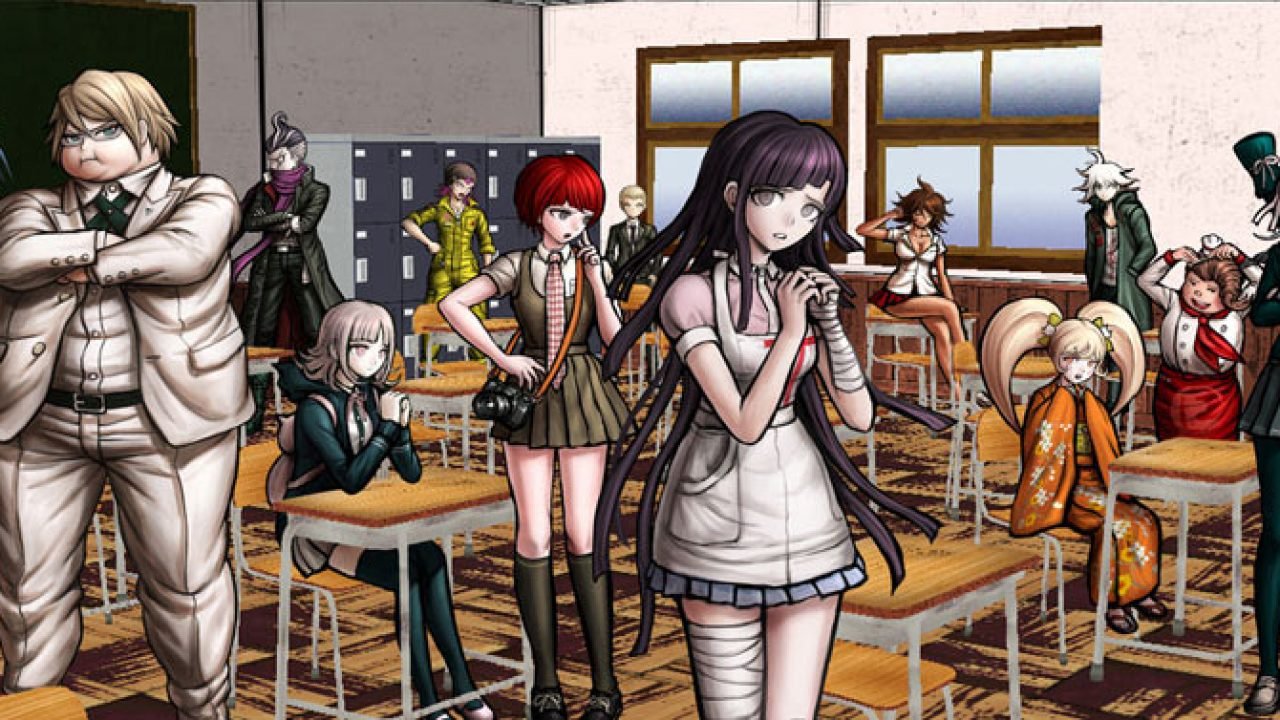
Personally, I find the pacing to be the best in SDR2, it does a good job of covering exposition while also keeping the player moving instead of taking everything one step at a time. The characters are also amazing all over again, and none of them feel like a rehash of those from the original game. Even generic protagonist Hajime manages to feel demonstratively different from Makoto in DTHH. It also tweaks the trial minigames in ways that make them more satisfying and adds some new ones that are even more engaging to play. It does a very clever job of making untangling complex mysteries in trials fun and exciting. It also changes the slow first-person exploration movement to a much faster side-scrolling perspective, barring a few areas where the first-person perspective returns. Unfortunately, the framerate issues are present in both the 2D and 3D exploration modes on the Switch version. Again, very upsetting considering the game ran fine on Vita back in the day.
Danganronpa V3: Killing Harmony is the third (and final) game in the mainline Danganronpa series and returns to being set inside a school, similar to the first game. An outside area can be explored in this game and the school feels a lot larger than the original Hope’s Peak Academy, though that isn’t necessarily a good thing. I found myself getting lost in the labyrinthian halls of the school quite a bit in V3, but was happy to find that when the first-person perspective returned once again, it didn’t come with the familiar framerate drop. It does make you wonder where the first two ports went wrong.
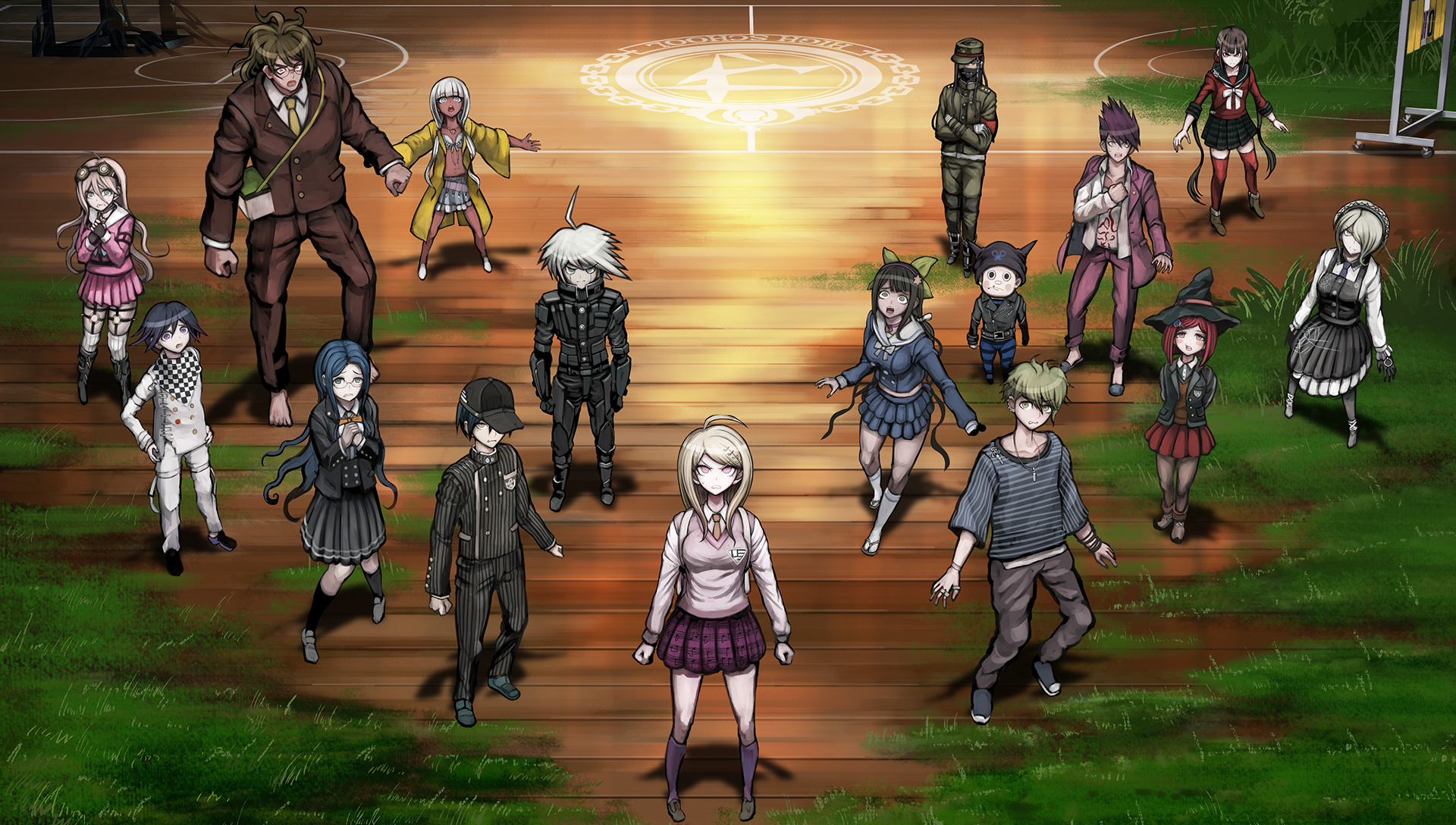
This game has the largest jump in graphical quality and really is where the art style peaks, with thick black outlines and more refined character designs. The UI has also been updated in a way that is so neon and vibrant that you can’t help but love looking at it. Some of the rendered art is a little bit off model, but nothing too particularly awful. Once again, the soundtrack is an absolute winner, but the game suffers a little bit with the introduction of Monokuma’s five (and relentlessly irritating) children, who spend a lot of the time bickering amongst each other instead of forwarding the plot. It makes the already long game feel even longer. I hate them terribly.
V3 also adds some new interesting minigames to the trial gameplay. In fact, some of the neatest mechanics are introduced in this entry that make the trials deeper and more interesting. The plot is also engaging once again with twists and turns that will keep you on the edge of your seat and another eclectic cast of characters to fall in love with. V3 is also known for its very divisive ending. I myself found it a little trite and even poorly written, but some people have nothing but praise for it. So it really is going to depend on your personal opinion.
“The game’s art is so stylized that even after all these years it still looks good“
Overall, the original Danganronpa series is very strong. It’s a shame that Decadence does not include Danganronpa: Ultra Despair Girls as it contains some important information regarding the overarching story and provides character development for some characters who sorely need it. Despite my love for it, the series has always had some definitive issues. Namely, the sexualisation of its female characters and misrepresentation of mental illness. While it doesn’t have too much effect on the story as a whole, these elements appear often enough that they are impossible to ignore and some of them even end up being plot-relevant on occasion, meaning they couldn’t be easily removed. I find the series enjoyable enough that I am mostly able to tune these things out, but it is something to keep in mind so it doesn’t come as a shock when it happens.
Danganronpa S: Ultimate Summer Camp is the new edition to the series, less of a mainline game and more of a fun little package of side content. It’s based heavily on the post-game content from V3, a game called the Talent Development Program where characters from all three games would be able to interact in a board-based game. Danganronpa S expands on this by adding a turn-based combat system to play while on the board, along with new and more interesting interactions between the characters. Bizarrely, the game does include characters from Ultra Despair Girls, which is odd considering the game wasn’t made part of the Decadence package, but it is still nice to see them.
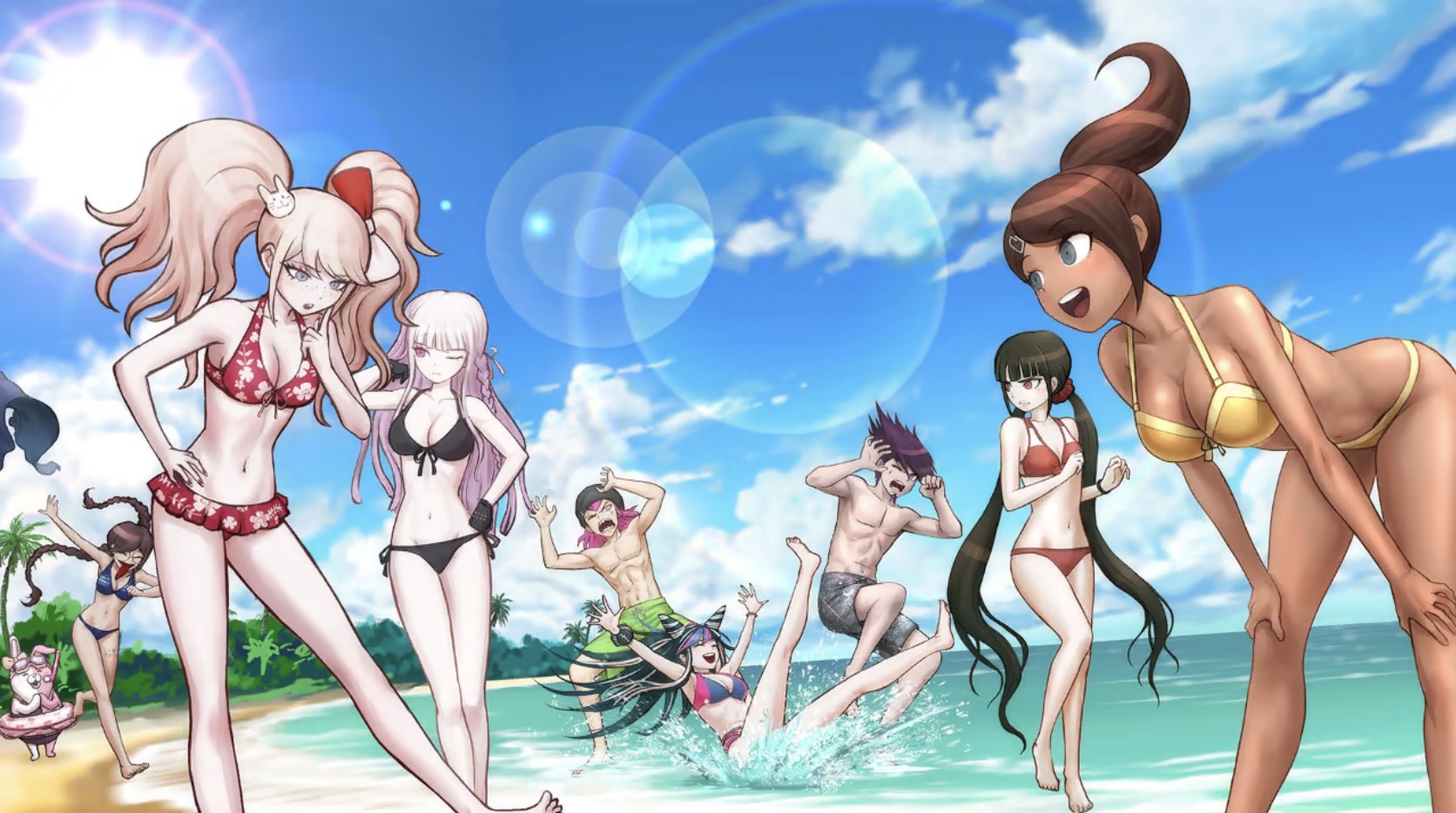
The gameplay itself in Danganronpa S is not particularly noteworthy. You roll a die to move around a board with different squares having different effects. You can level up, experience combat encounters, and most excitingly, have opportunities for character interactions. This is where Danganronpa S really feels like an experience made for fans of the original series. It’s so exciting to see scenes between three characters who would otherwise never even get to meet. You are also able to play as almost every character from each three mainline game and Ultra Despair Girls, meaning there are hundreds of different interactions to find.
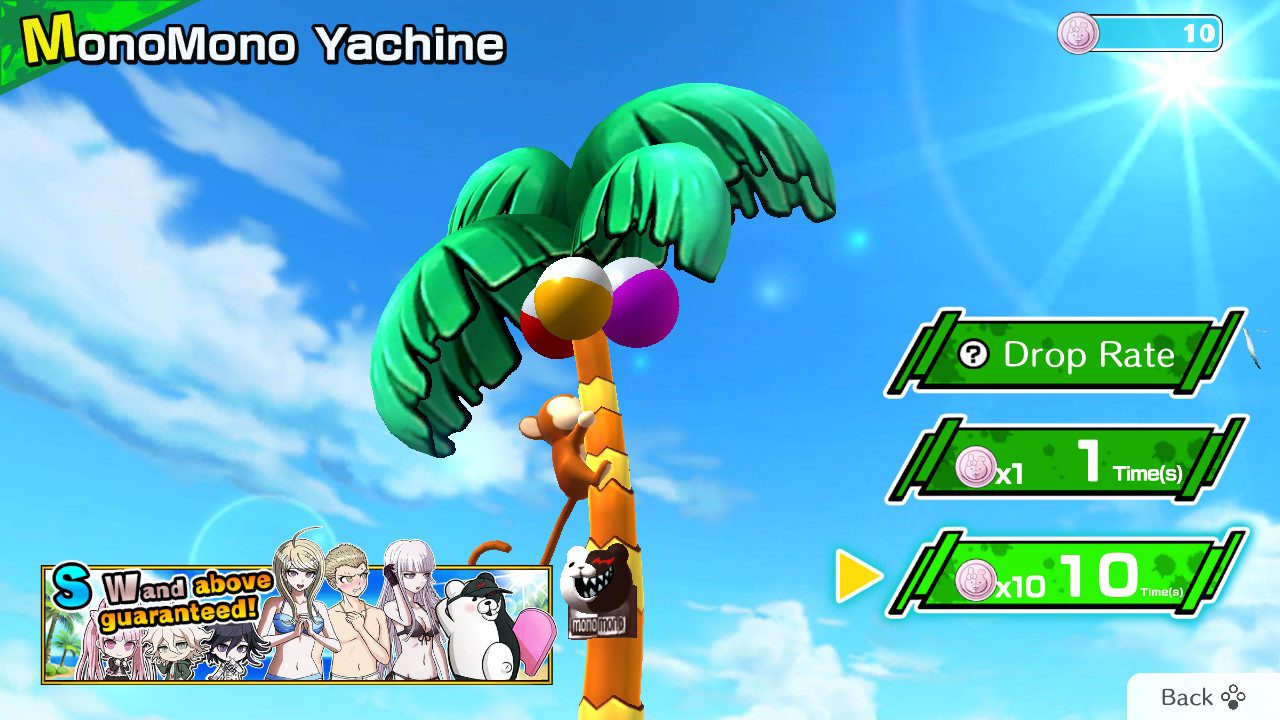
Danganronpa S does get repetitive, playing the same map as a different character each time. Apart from the character interactions, nothing really changes. I set the combat to auto and mostly just let the game play itself, but it didn’t bother me all that much because I just wanted to see the dialogue. There is also the issue of the gacha element, where you have to unlock all other characters outside of the four protagonists through randomised rolls fuelled by real-world money. It isn’t too egregious as you thankfully can’t get duplicates of a card you already have. You can also set up four characters in the battle mode and just let them fight for a while until you eventually get enough coins for a substantial few rolls. I would have preferred if there was no chance mechanic at all, but as far as gacha goes, it isn’t the worst example I’ve ever seen.
The ending is also a pain to reach. You have to have played through the boardgame (which lasts 50 moves each time) with every character available before you can unlock it. I didn’t end up reaching that point myself before writing this review as I wasn’t as lucky with the gacha machine as some people and didn’t want to pay for any cards myself. It is a cute ending, but I’m not sure it’s entirely worth all of that effort.
While I do have some issues with Danganronpa S: Ultimate Summer Camp, it is entirely a game for its fans with a focus on the characters of the series and their relationships with each other. I really liked all of the new dialogue and it was so cool to see characters who have never met form relationships together and bond over similar interests, while also expanding upon relationships from the original series. I think on its own Danganronpa S is probably a little overpriced for what it is, but in the Decadence collection, it’s really more of a fun add-on to an already great collection.
8
Great
Positive:
- Amazing soundtrack
- Gripping storyline
- Stunning visual design and characters
- Entertaining gameplay in original trilogy
Negative:
- Framerate issues on Nintendo Switch
- Gacha mechanics in Danganronpa S
- Gameplay in Danganronpa S doesn't hold much weight
I would highly recommend playing Danganronpa if you have any sort of interest in murder mystery or visual novels, either on Switch after they patch the performance issues or on another platform. The games are a lot of fun and you are sure to be sucked into them. The aesthetic and music is a step above the rest and while the story can be a little wild at times, it will always keep you engaged. It is nice that Danganronpa has returned to its portable roots, but upsetting that the ports are a little rough around the edges. I wouldn’t say this is the best way to play the series in its current state, but hopefully that will change in time.
